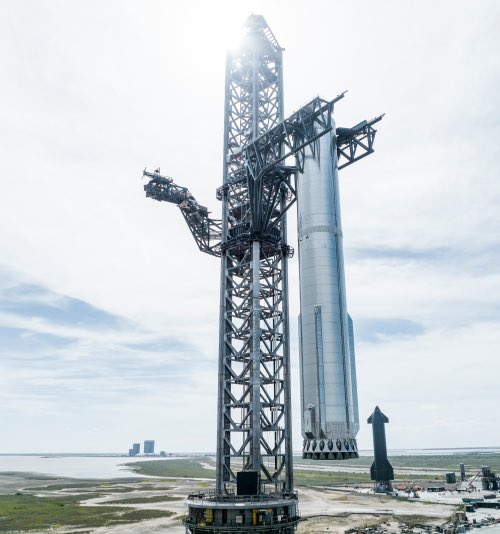Capitalism in space: In a letter sent to the FCC, SpaceX has revealed that it has revised its plans for launching the second generation of Starlink satellites, and has decided to launch them with both Falcon 9 and Starship rockets.
SpaceX has decided to use a mix of Falcon 9 and Starship rockets to launch the 30,000 satellites in its proposed second-generation Starlink broadband constellation. Launching some of the satellites with SpaceX’s “tested and dependable Falcon 9” will accelerate the constellation’s deployment to improve Starlink services. SpaceX director of satellite policy David Goldman wrote in an Aug. 19 letter to the Federal Communications Commission. Goldman did not say when SpaceX could start launching the second-generation constellation, which remains subject to FCC approval.
Previously the company’s plan had been to use Starship only, essentially retiring Falcon 9 once Starship was flying. This change could be for two fundamental reasons. First, the company has been launching Starlinks on Falcon 9 like clockwork this year, at a pace that could launch as many as 2,500 Starlink satellites in 2022 alone. With about 70% of that rocket reusable, it might now seem cost effective to continue to use it, even after Starship is flying.
The second reason is more worrisome, and has to do with Starship itself. SpaceX officials might now realize that the delays being imposed by the federal regulatory leviathan on Starship development might be significant enough that it won’t be ready when they need it for the full deployment of Starlink’s second generation constellation. If the FCC approves that deployment (an approval that is presently pending), SpaceX will have to launch at least half the full constellation of 30,000 satellites by around 2024 (thought that date might have been revised slightly).
It now might be necessary to use Falcon 9, because the federal government under Biden is standing in the way of Starship development.
Of course, it is possible that the engineering challenge of building Starship might be another reason. SpaceX might have realized that the rocket will be delayed anyway, and thus needs Falcon 9 to meet its timetable as promised to the FCC.



